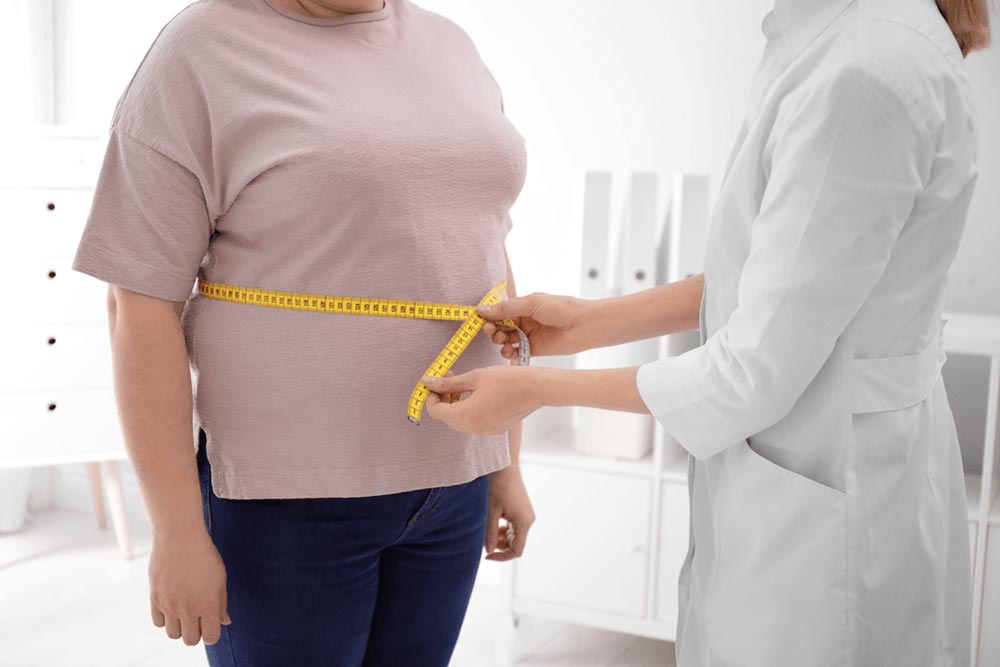
Body composition is more important than BMI for renal cancer survival rates
Body composition is important for survival rates in renal cell cancer. Research from the Radboudumc and IKNL shows that low muscle quality and low organ fat are associated with poor survival. This involves different stages of renal cancer, ranging from stage I-III to stage IV.
In this study, now published in Clinical Nutrition, researchers led by nutrition and cancer epidemiologist at Radboud university medical center Alina Vrieling analysed over a thousand CT scans of patients diagnosed with renal cancer. They selected CT scans of the area at the level of the umbilicus to determine the amount of fat around the organs (visceral adipose tissue), fat directly under the skin (subcutaneous adipose tissue) and muscle. "The amount of fat and muscle at this location is strongly related to the total amount of fat and muscle in the body," Vrieling says. In addition, the researchers determined muscle quality.
These body composition data were combined with information on body weight and height at diagnosis, tumor characteristics, treatment and tumor recurrence, and survival. Vrieling: "We found that a lower muscle quality and a lower amount of visceral fat are associated with a poorer survival rate in patients with renal cancer, both in an early stage and advanced stage, where there are metastases. One explanation may lie in poorer physical functioning and reduced energy reserves. We found no correlation with the amount of muscle, contrary to previous research." More research is needed into the possible impact of nutritional or exercise interventions, says Vrieling: "Programs like Fit4Surgery could help improve body composition. We need to further investigate whether this is the case and whether they increase survival rates in renal cancer."
More focus on body composition than BMI
In recent years, there has been increasing attention for body composition. This gives a clearer picture of what someone looks like on the inside than the Body Mass Index (BMI). Vrieling: "We know that a high BMI is associated with an increased risk of renal cancer, but with a lower risk of death. We call this the obesity or BMI paradox. We see this for more cancer types." One of the possible explanations for this is body composition: "It may be that people with exactly the same BMI, which is calculated by weight and height, look completely different on the inside. Think for example of an obese man and a bodybuilder. Body composition seems to be a better predictor of someone's chances of survival than BMI."
Analysing CT Scans Using Artificial Intelligence
In this study, the researchers used a semi-automated program (Slice-O-Matic) to determine the amount and quality of fat and muscle. "This is a time-consuming process that takes about 15-30 minutes per patient," says PhD student Scott Maurits, who performed all the analyses. In cooperation with Professor Bram van Ginneken's Diagnostic Image Analysis Group, a fully automated program using artificial intelligence algorithms has now been developed. This program is currently being validated. Next, the researchers want to extend this program from 2D to 3D analyses.
"A major advantage of this program is that you can analyse large amounts of CT scans in a short period of time," says Vrieling. "This is desirable for further research into survival and, for example, into complications after surgery and toxicity of chemo and immunotherapy. But also for application in health care."
Publication
Scott Maurits, Michiel Sedelaar, Peter Mulders, Katja Aben, Lambertus Kiemeney, Alina Vrieling. Skeletal muscle radiodensity and visceral adipose tissue index are associated with survival in renal cell cancer: A multicenter population-based cohort study. Clinical Nutrition